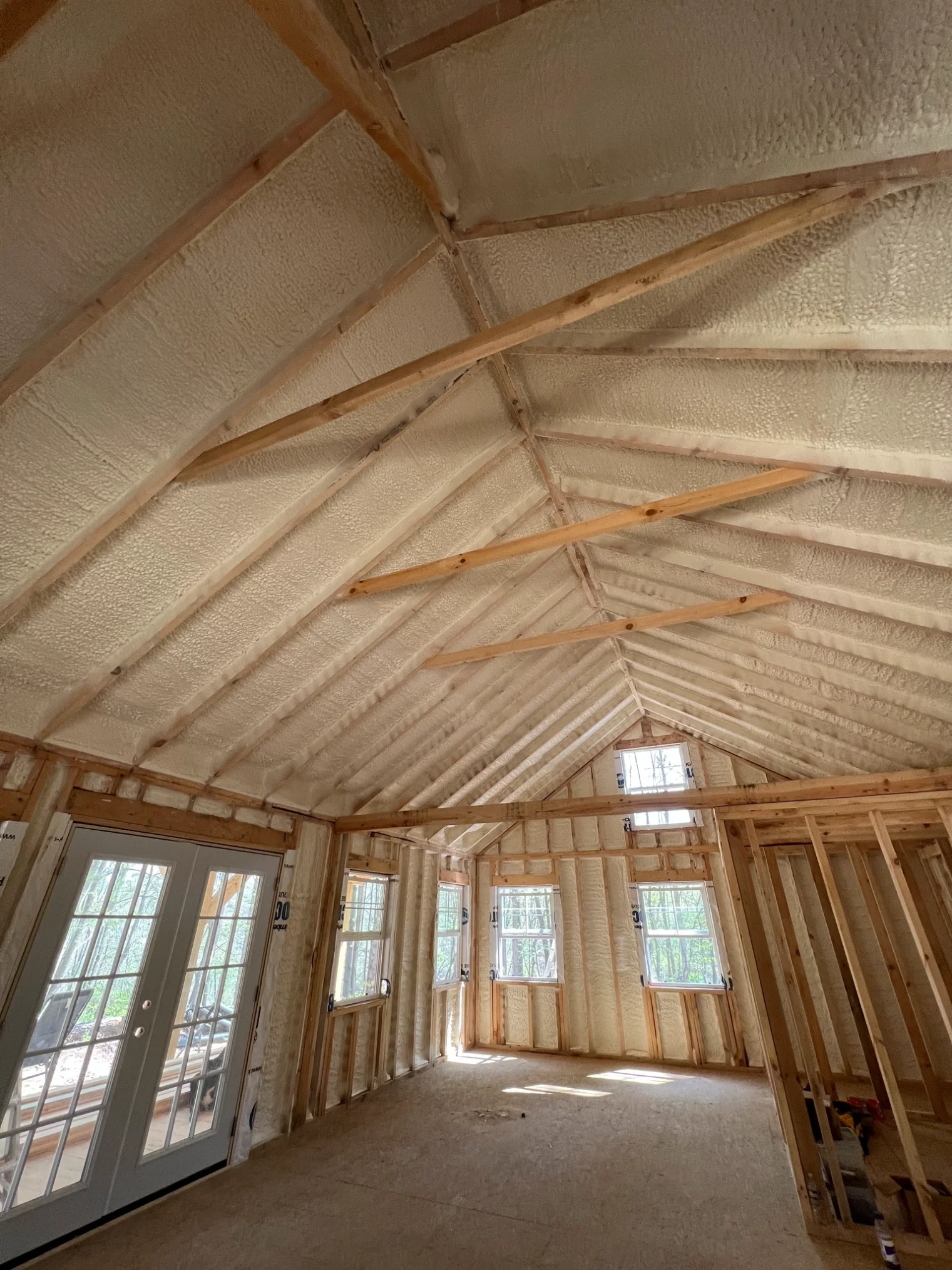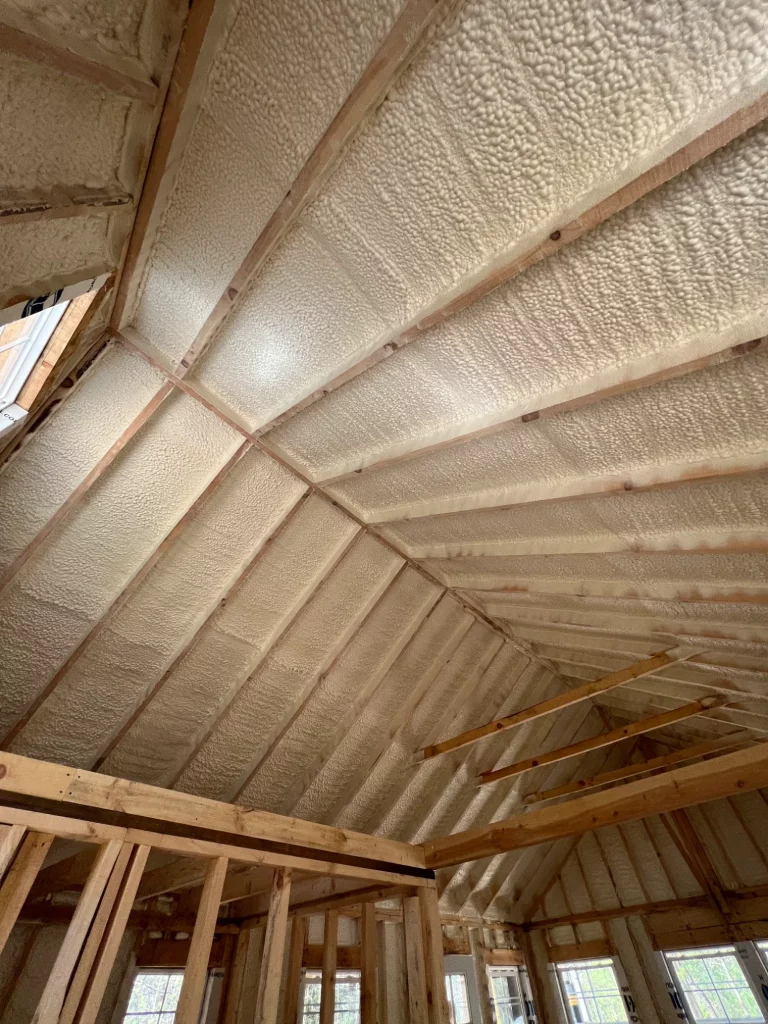
Spray foam insulation significantly improves energy efficiency in Wheeling properties by creating an airtight seal that limits air leakage, thermal bridging, and moisture infiltration. This leads to reduced heating and cooling costs throughout the year, especially during Ohio Valley’s cold winters and humid summers. Compared to traditional insulation types, spray foam performs better in controlling indoor air quality, temperature stability, and long-term durability.
Closed-cell and open-cell spray foam both contribute to building performance, but each serves distinct needs. Closed-cell spray foam offers a higher R-value per inch, making it suitable for exterior applications or areas prone to moisture. Open-cell spray foam provides effective thermal resistance while allowing controlled vapor permeability in interior settings.
Ohio Valley Spray Foam has direct experience applying both types across a range of residential and agricultural buildings in Wheeling. All technical specifications provided here are based on actual use cases and manufacturer-tested data.
Wheeling experiences hot summers and cold winters, making insulation performance critical. Spray foam supports year-round energy savings through high thermal resistance and moisture control.
| Feature | Closed-Cell Spray Foam | Open-Cell Spray Foam | Fiberglass Batts | Blown-In Fiberglass |
|---|---|---|---|---|
| R-Value (per inch) | 6.0 to 7.4 | 3.5 to 3.8 | 2.9 to 3.8 | 2.2 to 2.9 |
| Air Seal Quality | Excellent | Good | Poor | Moderate |
| Water Resistance | High | Low | Low | Low |
| Sound Dampening | Moderate | High | Low | Moderate |
| Material Density | 2.0 lbs/ft³ | 0.5 lbs/ft³ | n/a | n/a |
| Installation Longevity | 30+ years | 30+ years | 10-20 years | 15-30 years |
| Specification | Closed-Cell Foam | Open-Cell Foam |
|---|---|---|
| Core Density | 1.75 – 2.25 lbs/ft³ | 0.4 – 0.6 lbs/ft³ |
| R-Value @ 1 inch | 6.5 – 7.4 | 3.5 – 3.8 |
| Vapor Permeability | < 1.0 perm | > 10 perms |
| Water Absorption (max) | < 1% | 5% – 10% |
| Air Barrier Thickness | ~1 inch | ~3 inches |
In many Wheeling properties, spray foam has proven to reduce HVAC load by 20-40%. The sealed envelope reduces drafts and cold spots in winter. For older homes with leaky framing or attic bypasses, spray foam delivers immediate, measurable savings.
Bonus Tip: On pole barns and outbuildings, closed-cell foam prevents condensation on metal walls, reducing corrosion risk and extending building lifespan.
Bonus Tip: Open-cell foam is often preferred for interior partition walls where sound attenuation is a concern, such as between bedrooms or in home offices.

Ohio Valley Spray Foam offers services that directly impact energy savings and moisture control in Wheeling buildings:
Closed-cell in basements and walls, open-cell in attics and interior spaces.
Once cured, both types are inert and do not off-gas harmful chemicals.
Yes. Hybrid approaches are often used in retrofits to manage costs.
It does not feed mold and limits moisture buildup, helping prevent growth.
Ohio Valley Spray Foam provides region-specific solutions built on years of field experience across residential, commercial, and agricultural settings.
For guidance on selecting the right insulation approach:
Phone: (740) 373-3626
Email: [email protected]
Properly installed spray foam can last over 30 years without degradation.
Yes, but requires access behind drywall or siding. Best applied during renovation.
Open-cell foam reduces airborne noise. Closed-cell offers modest acoustic benefits.
Overapplication can lead to pressure issues in walls. Experienced installers avoid this.
Closed-cell remains stable in freezing temperatures and prevents frost infiltration.